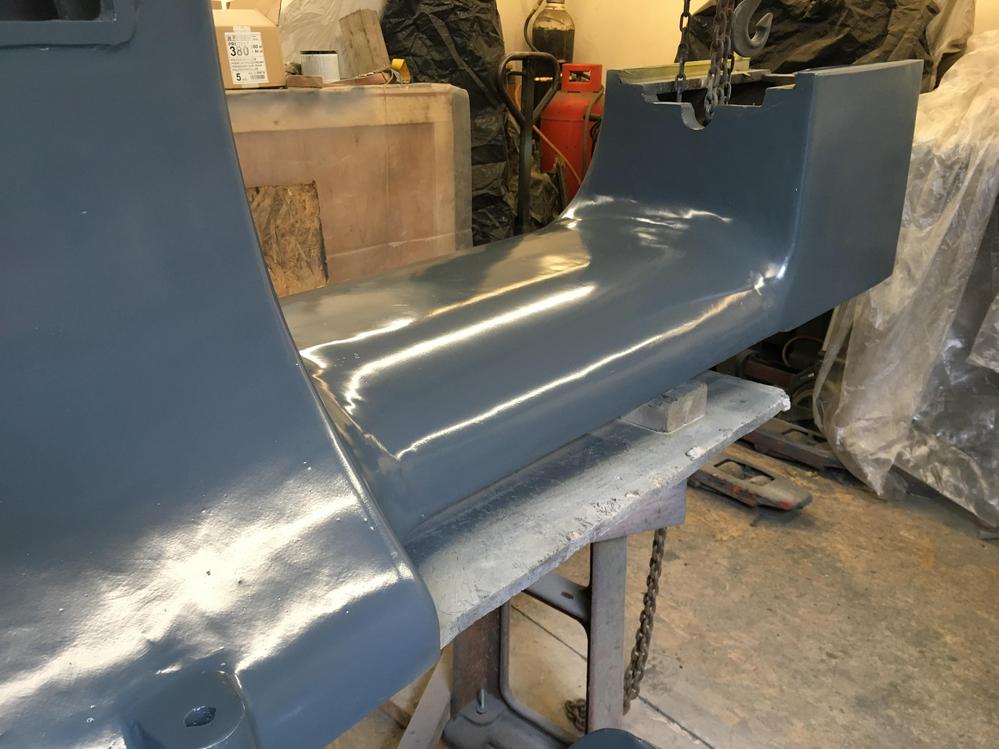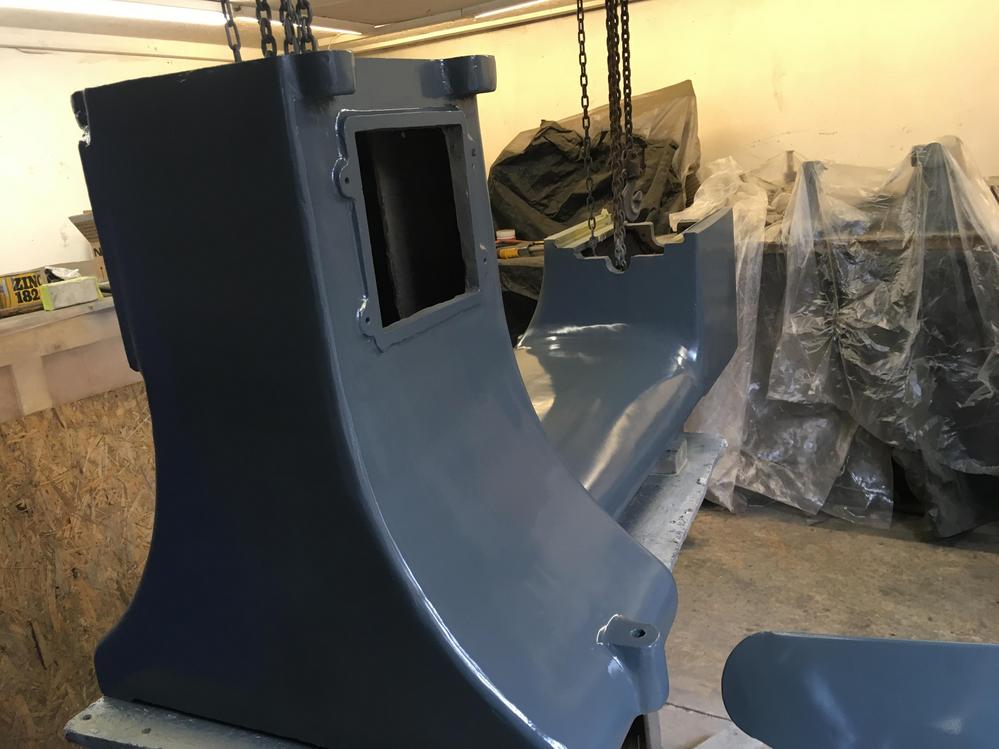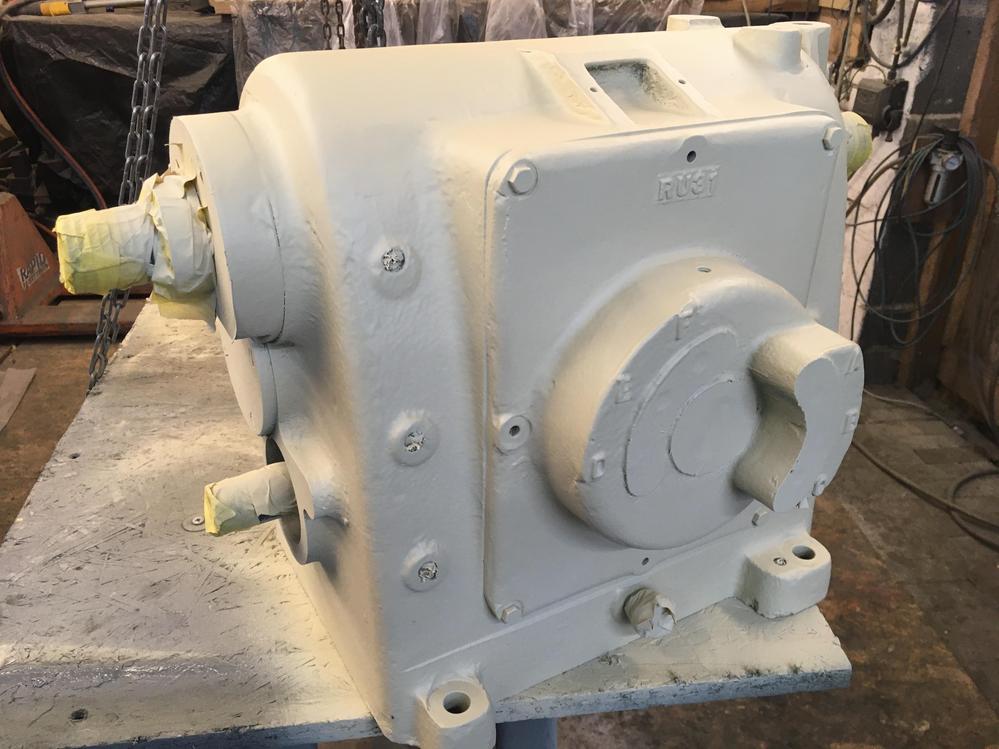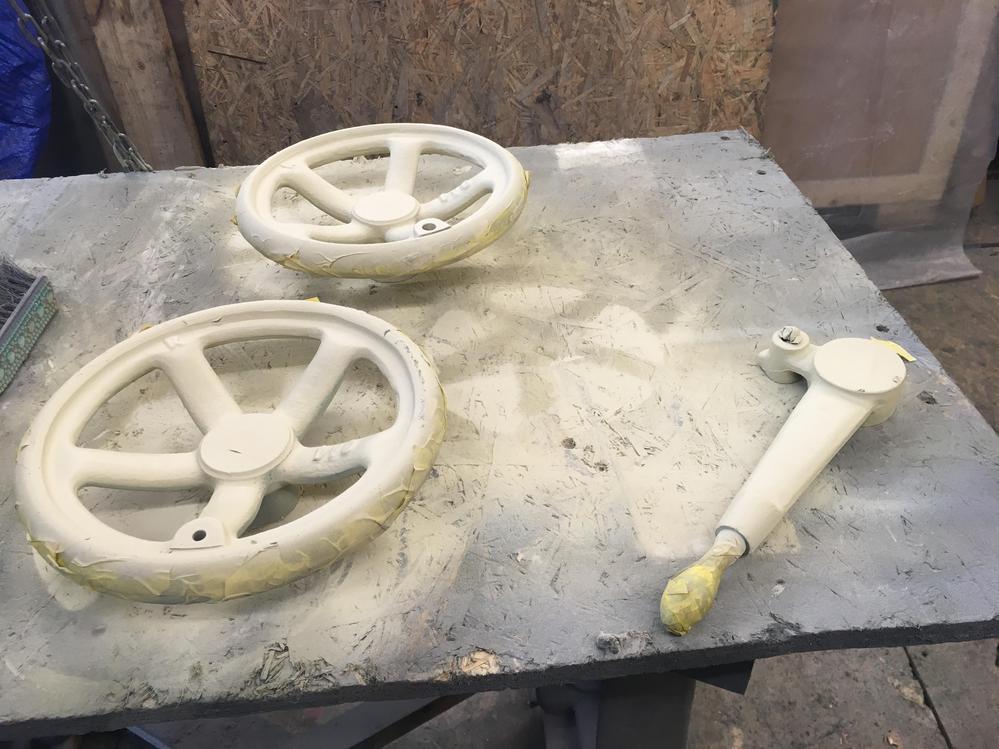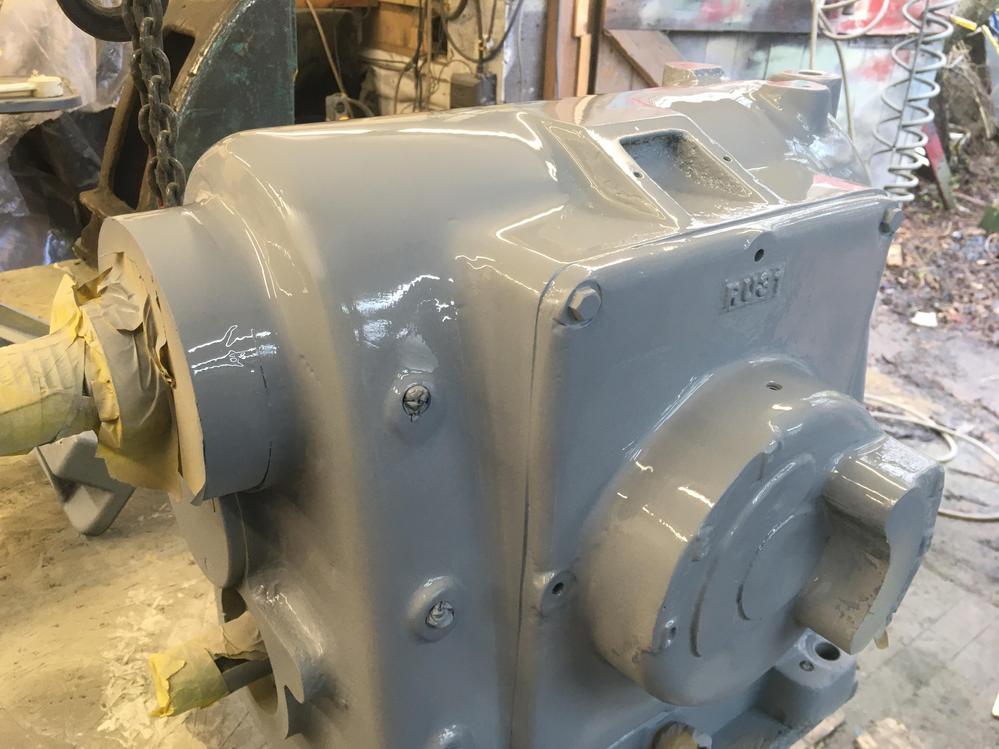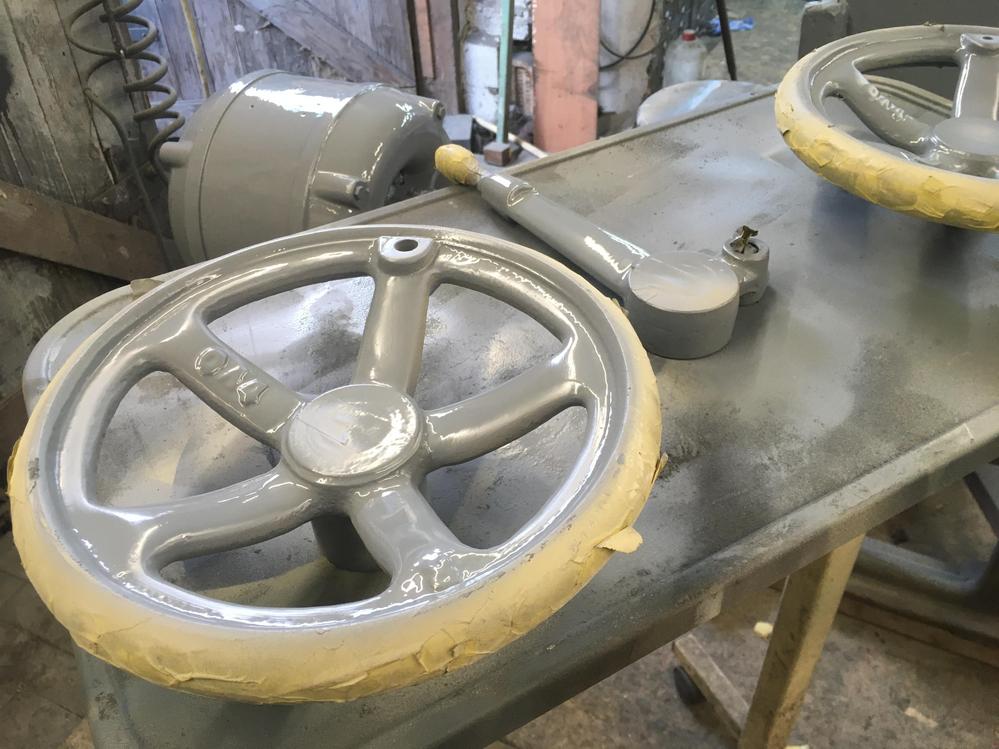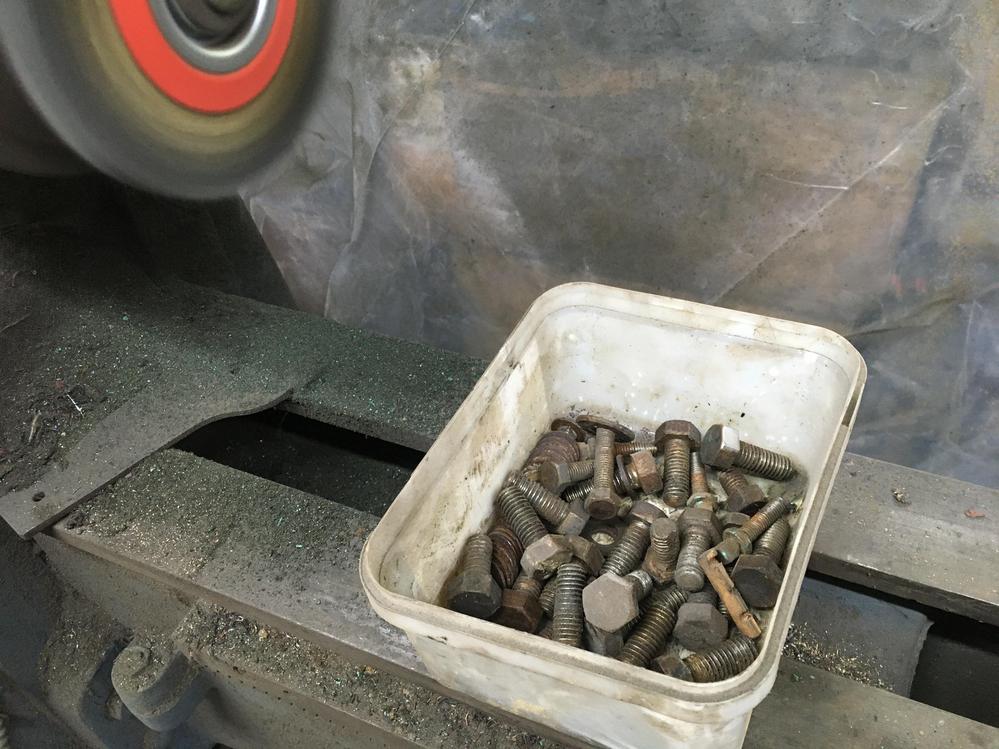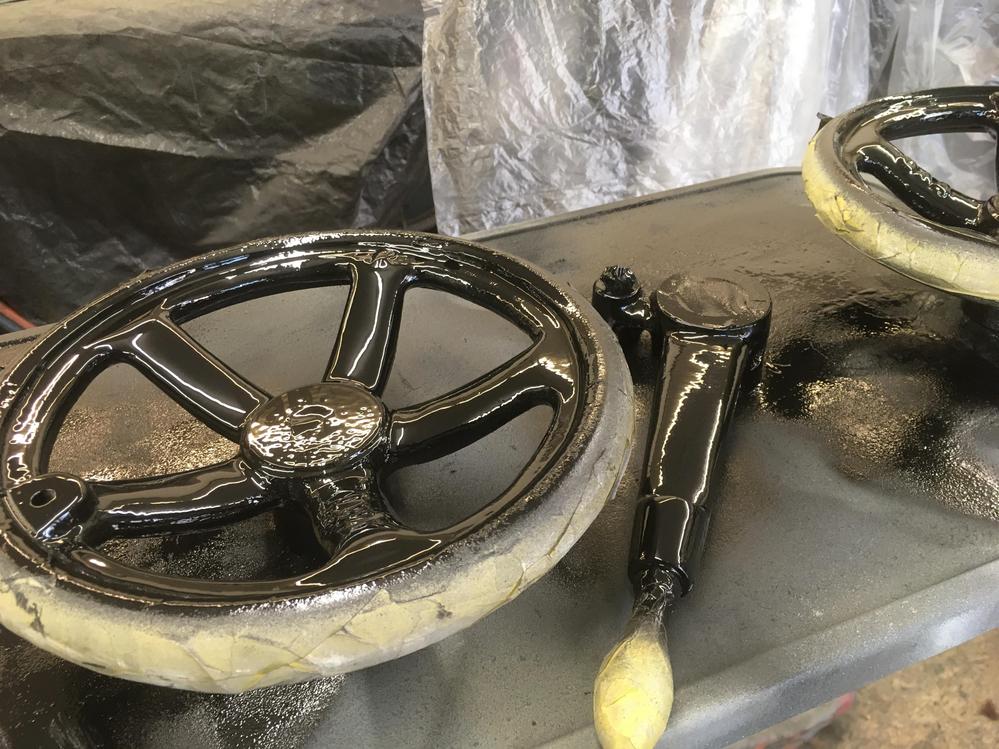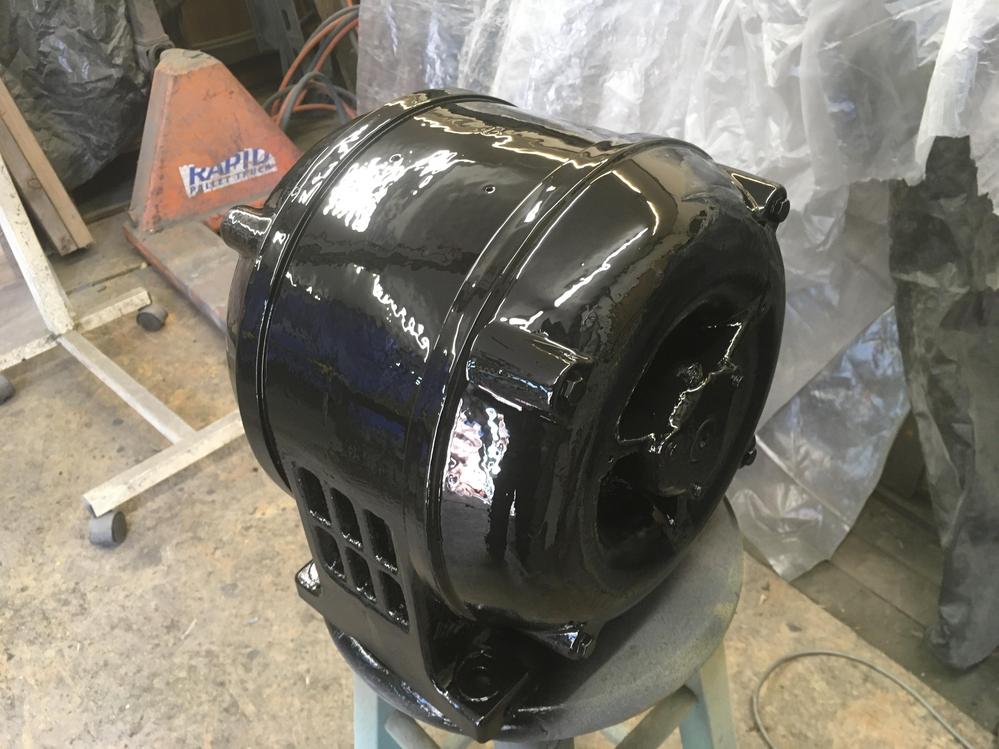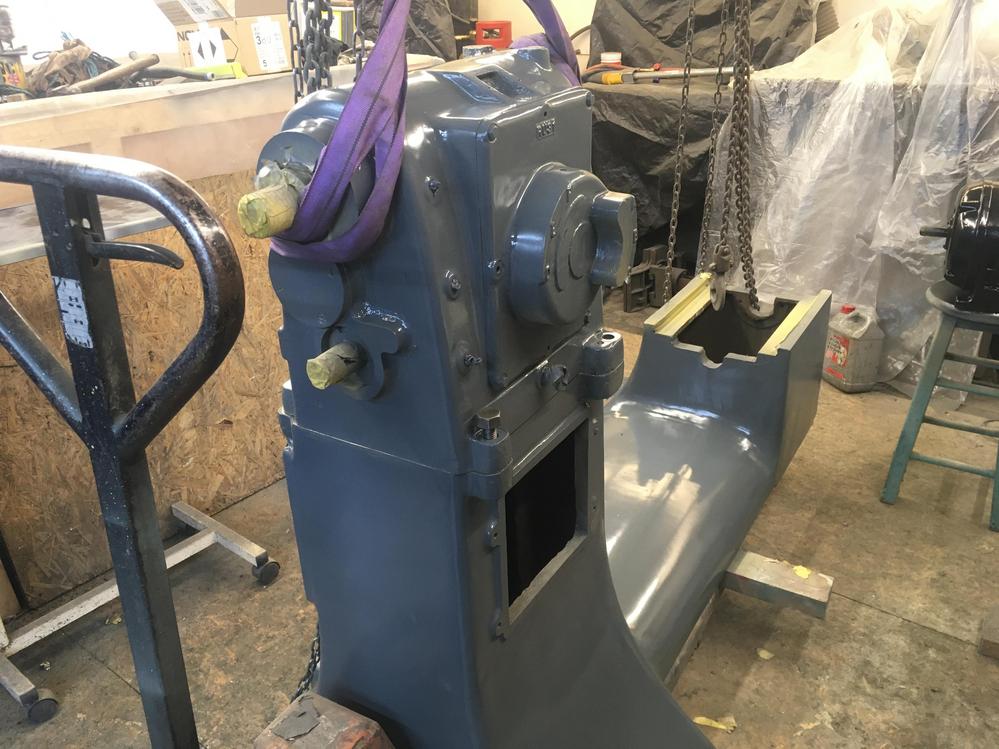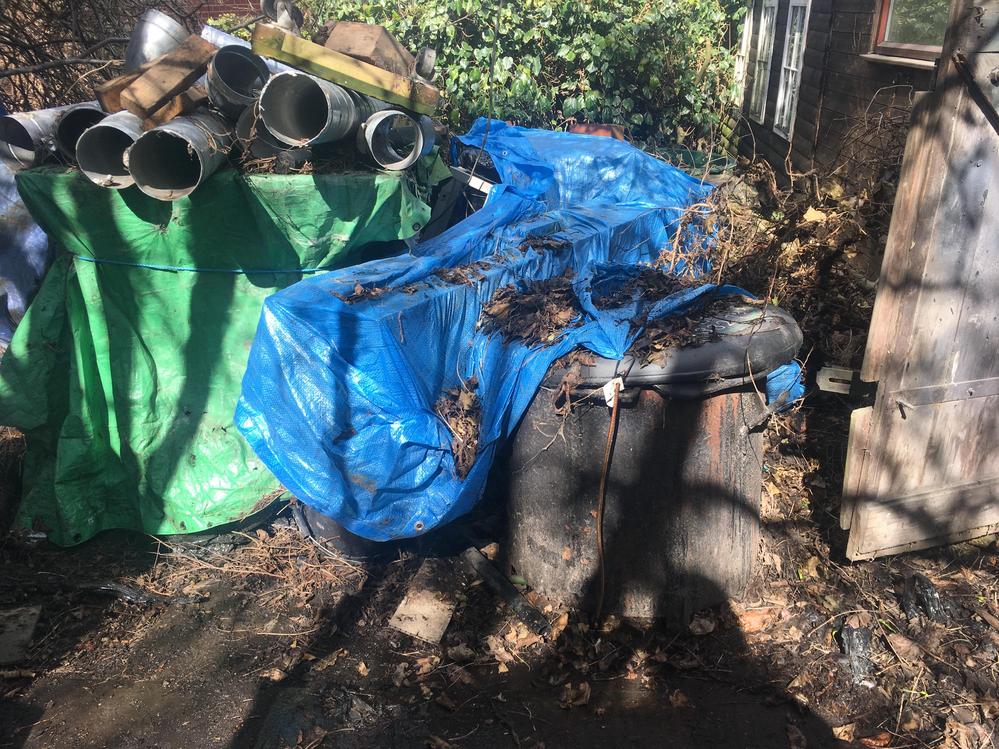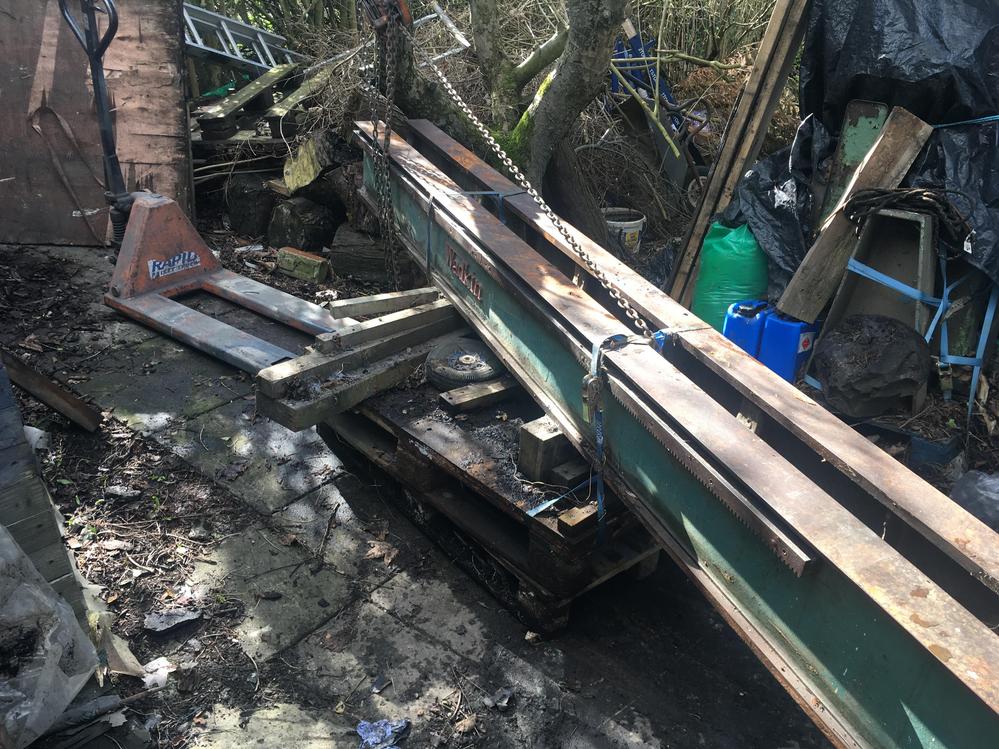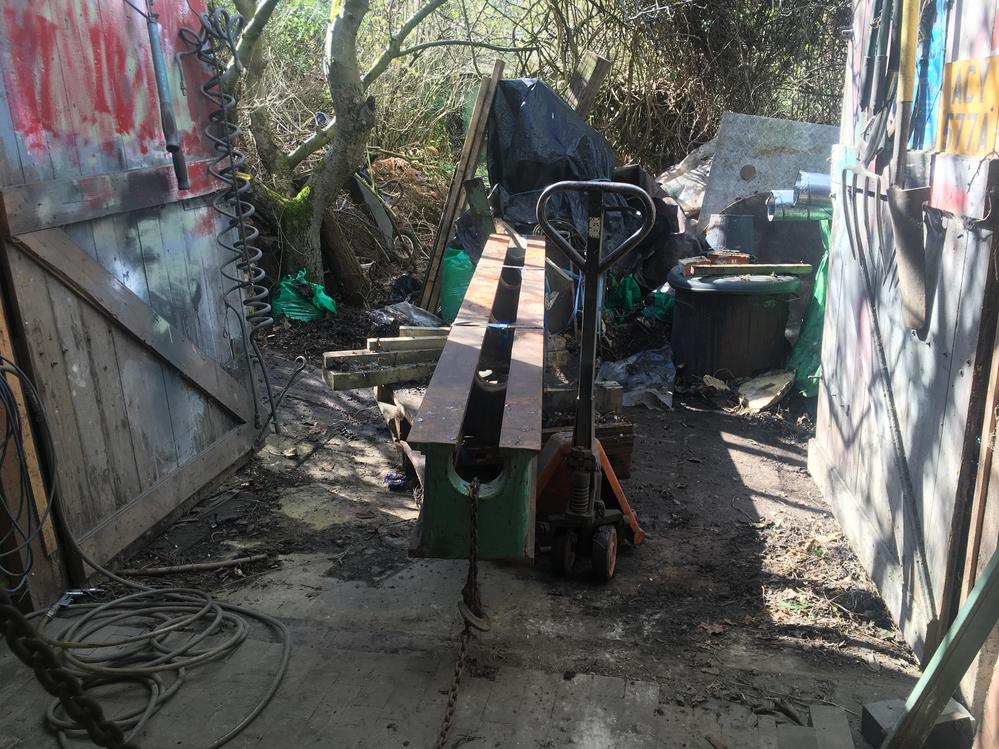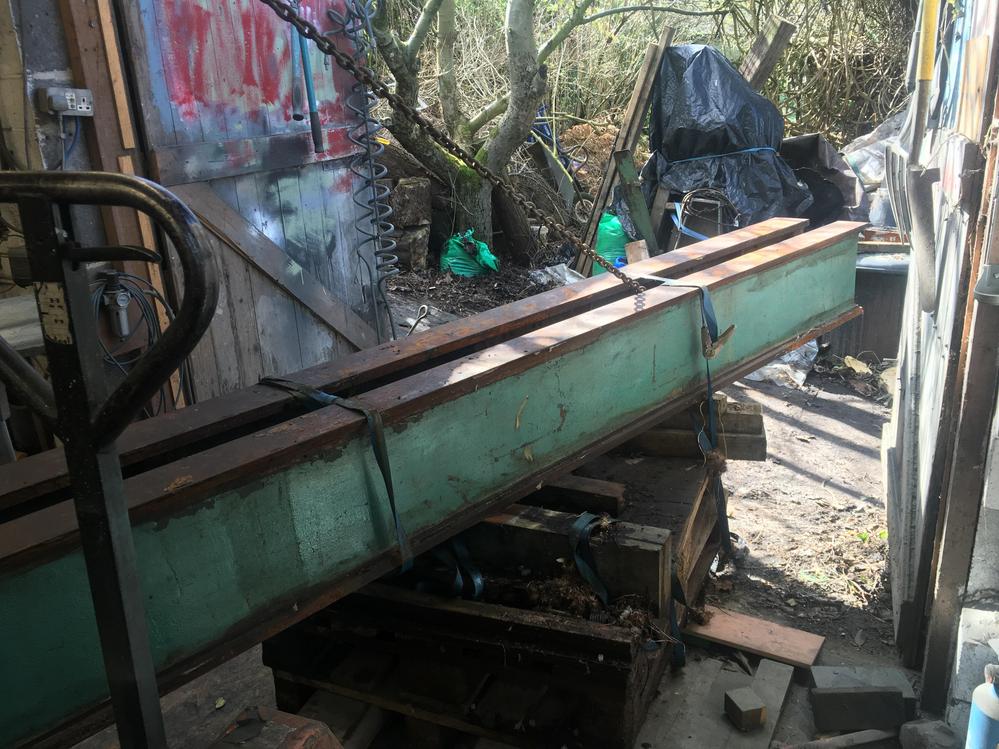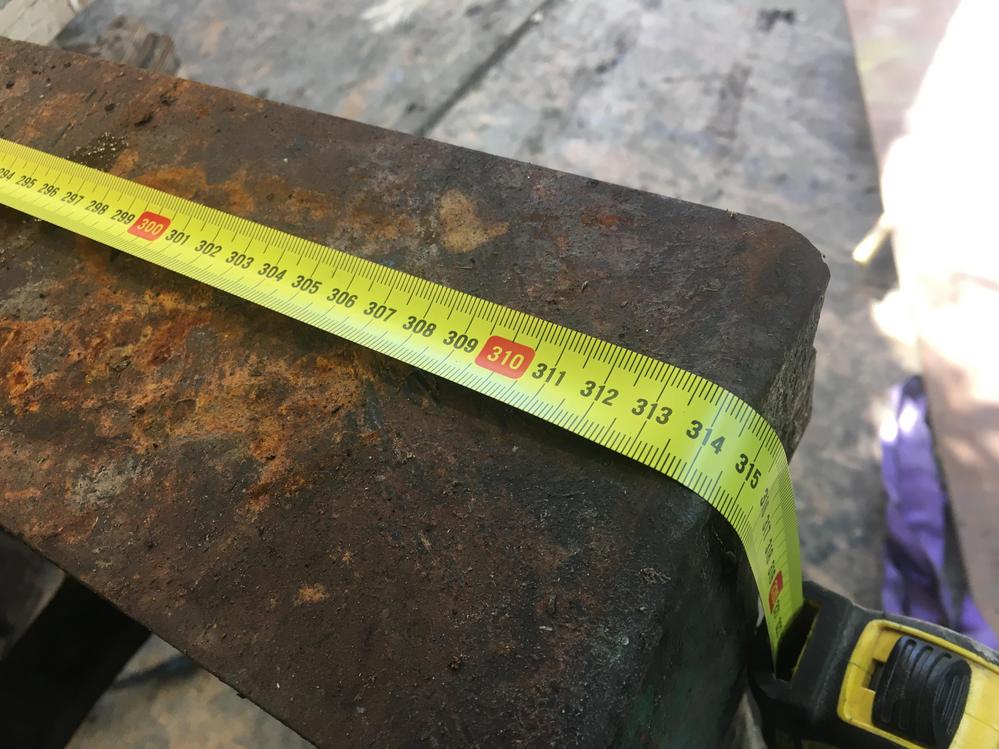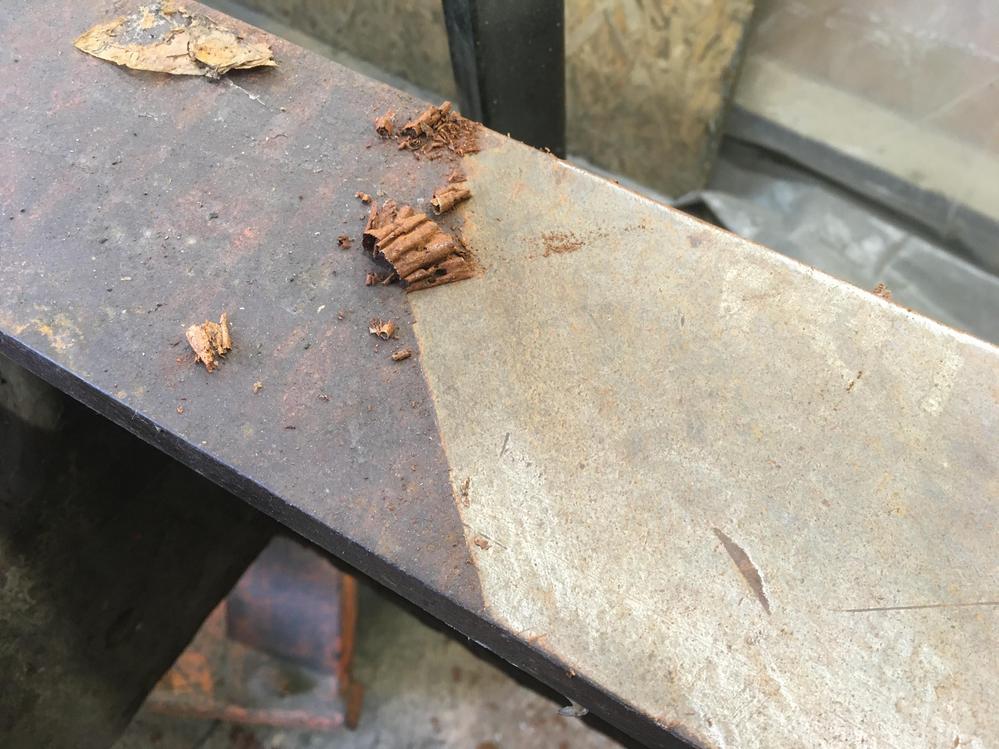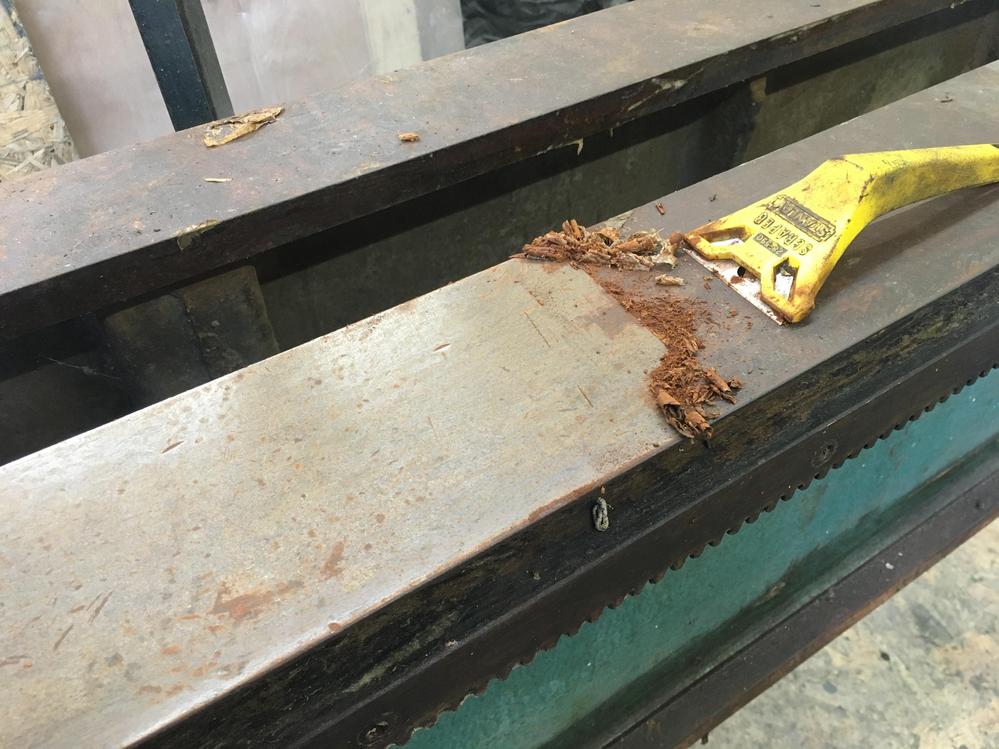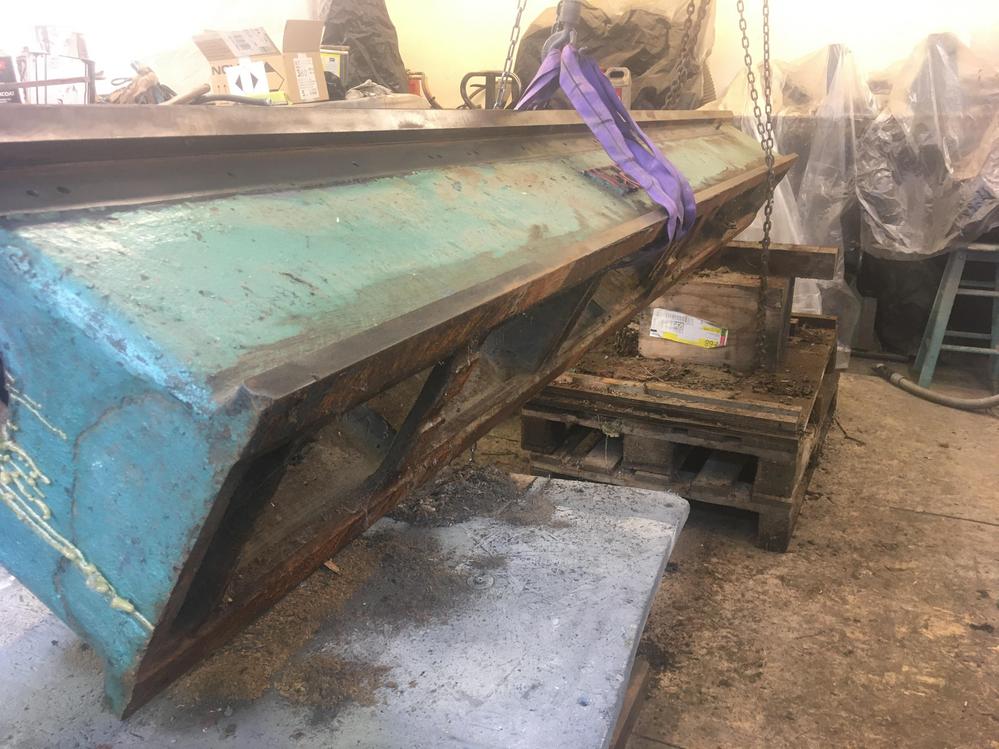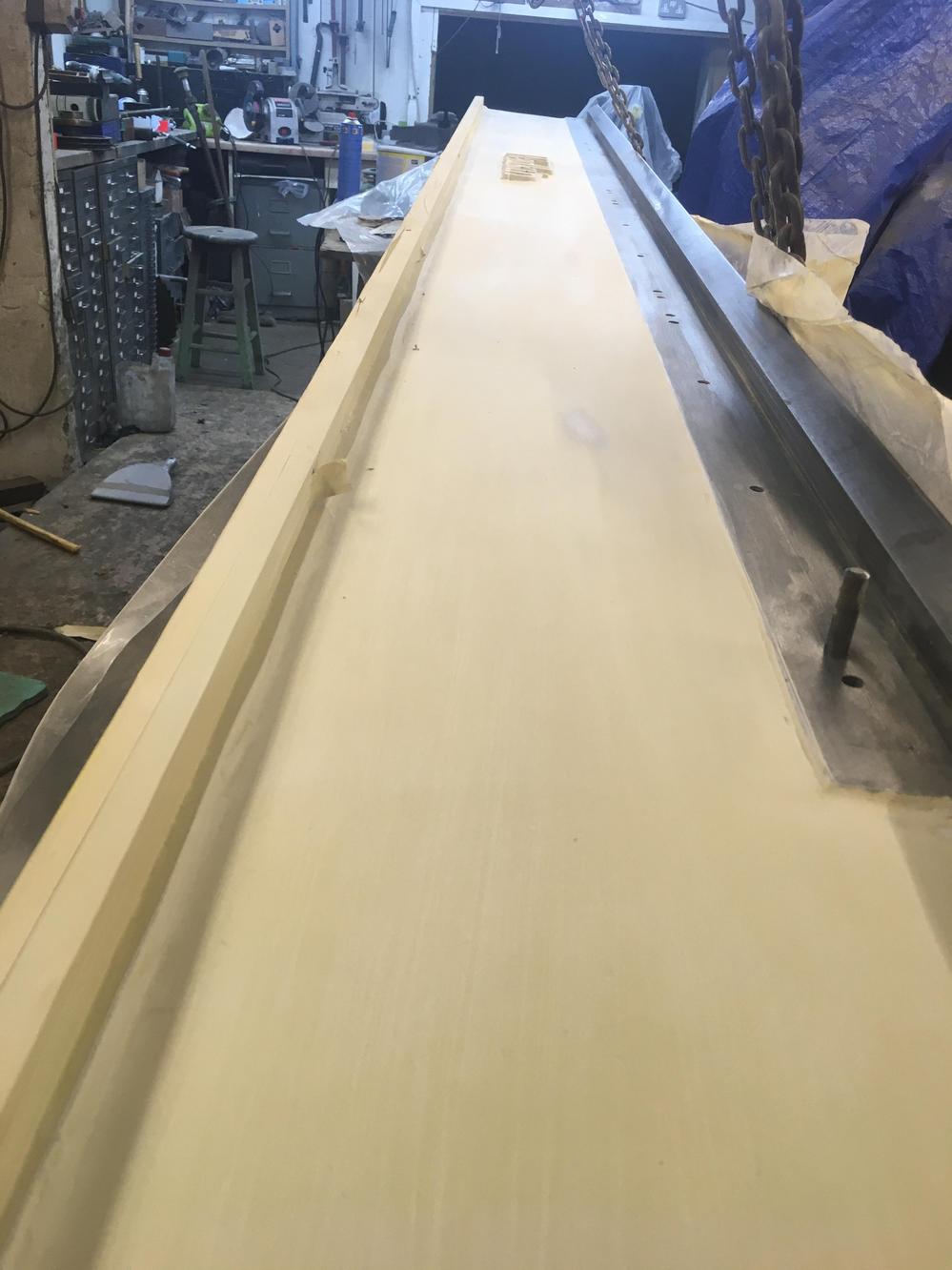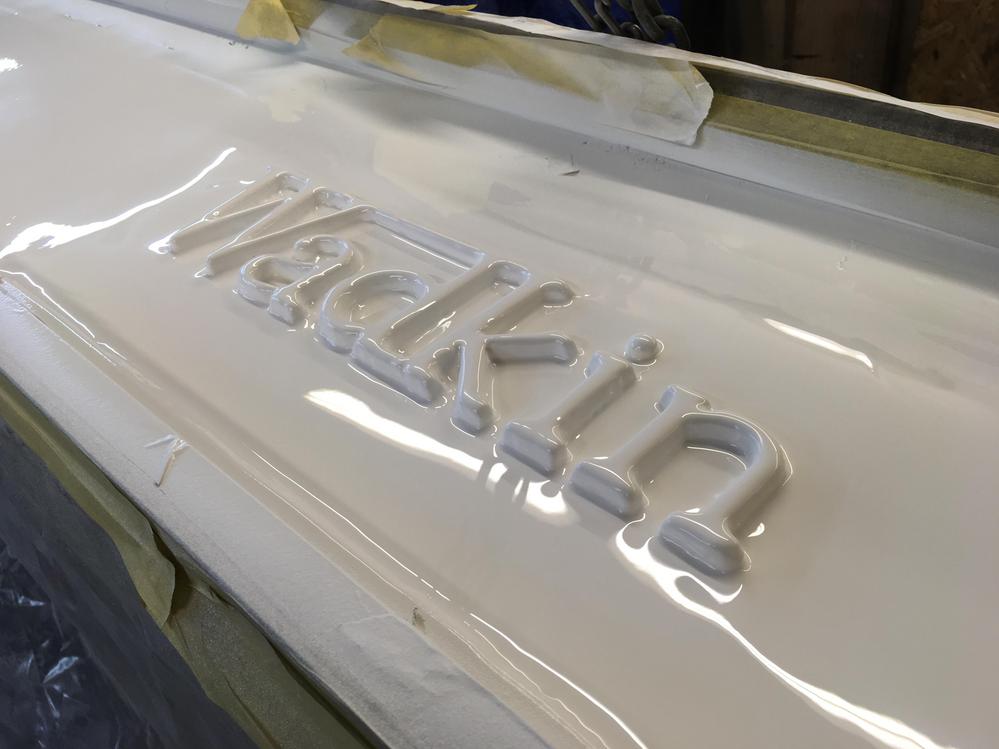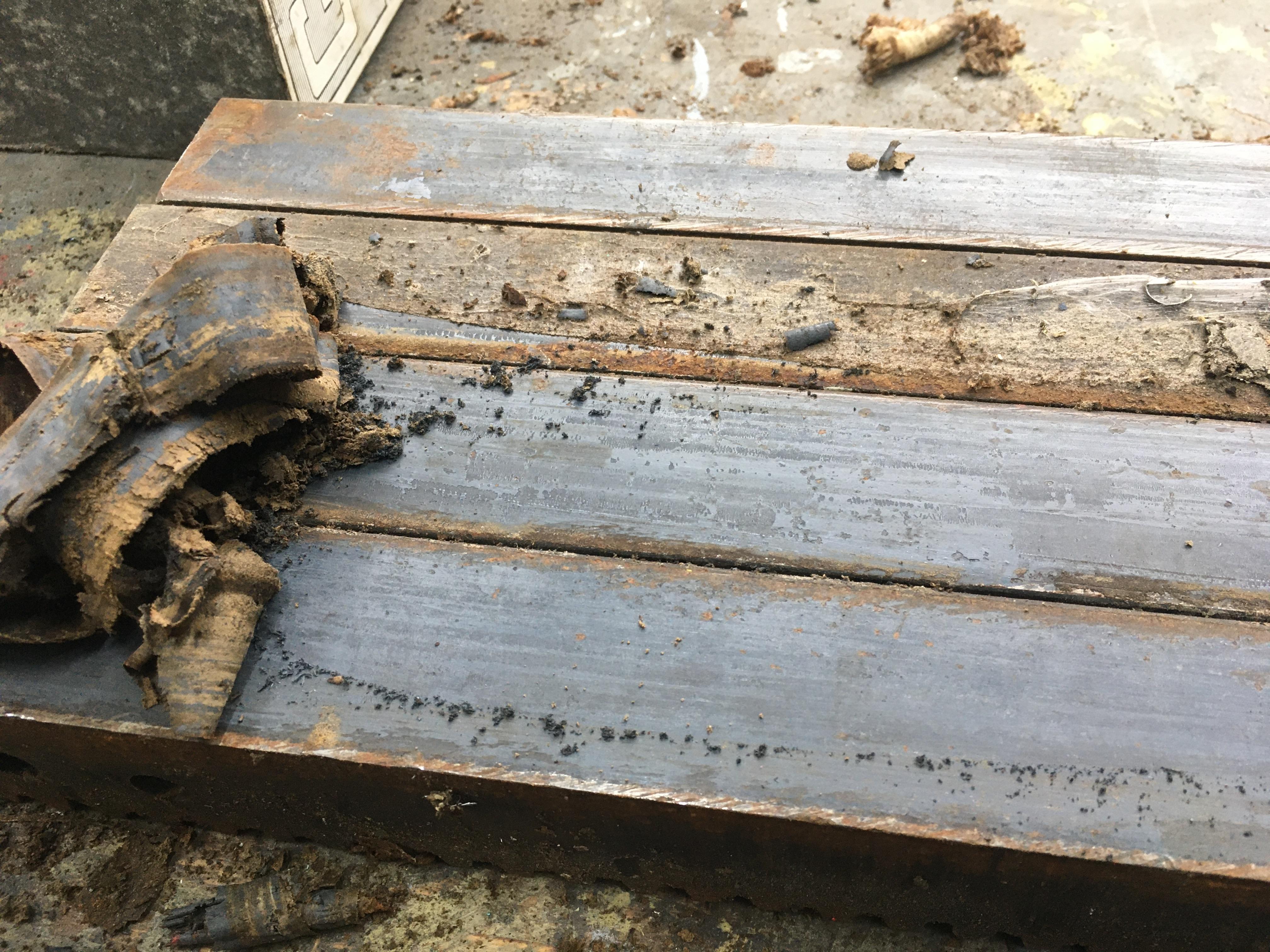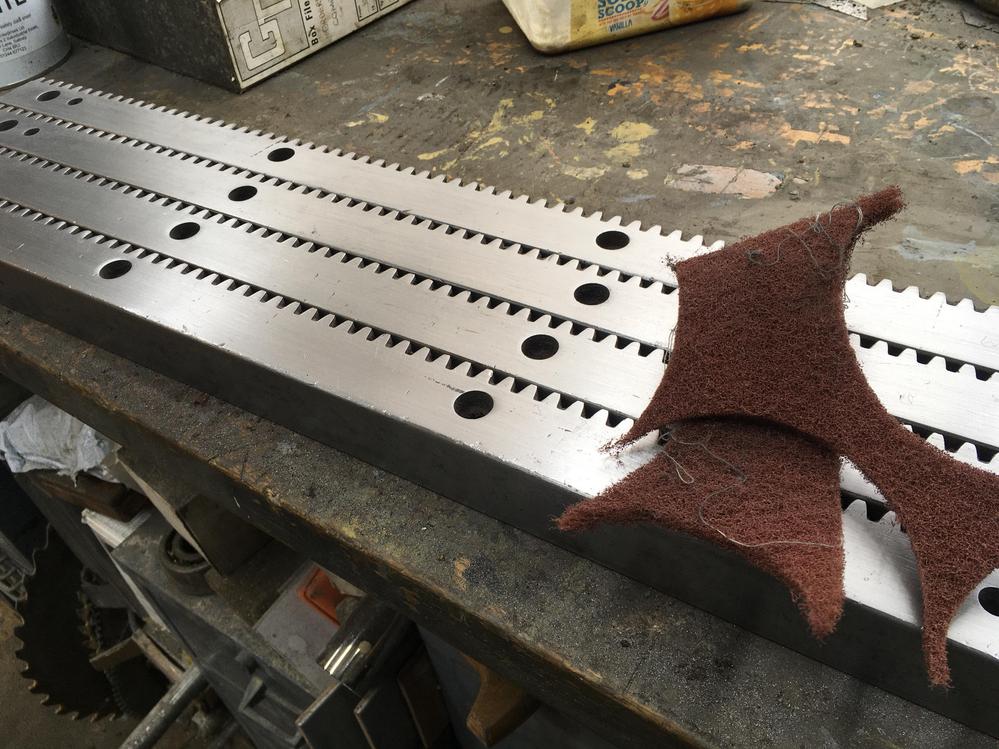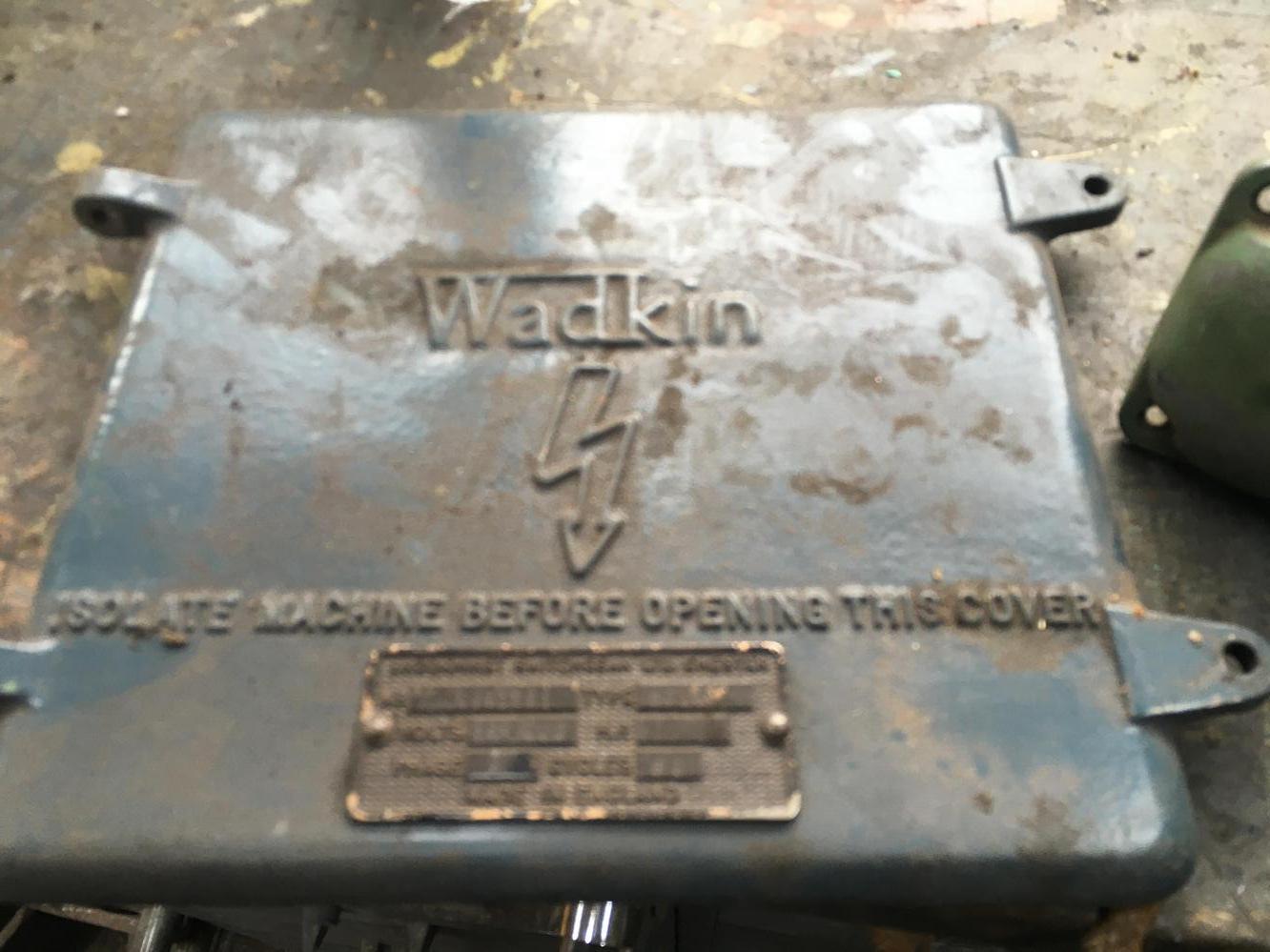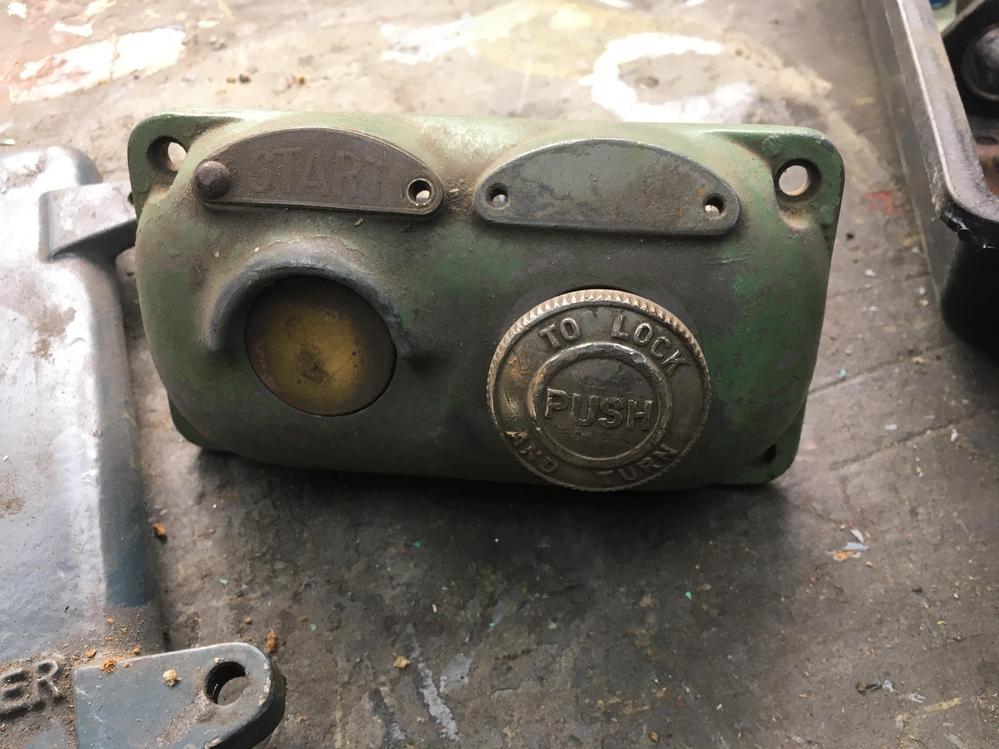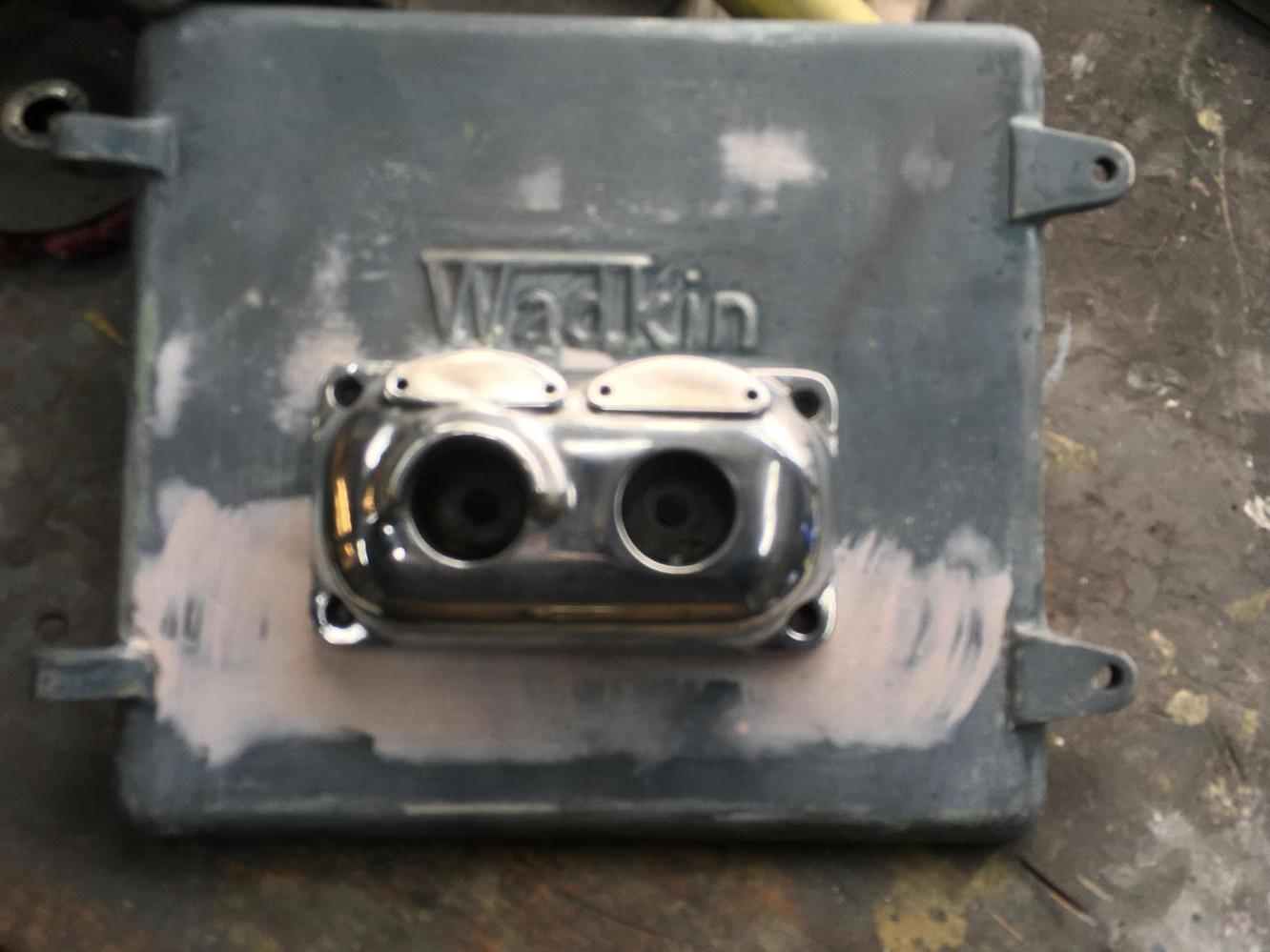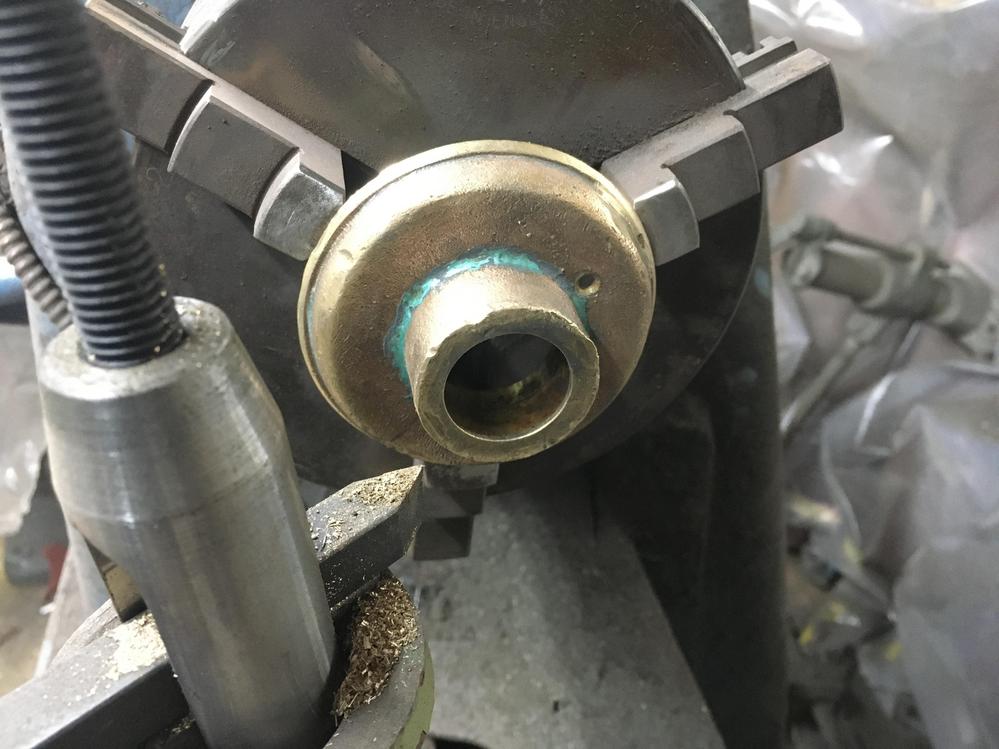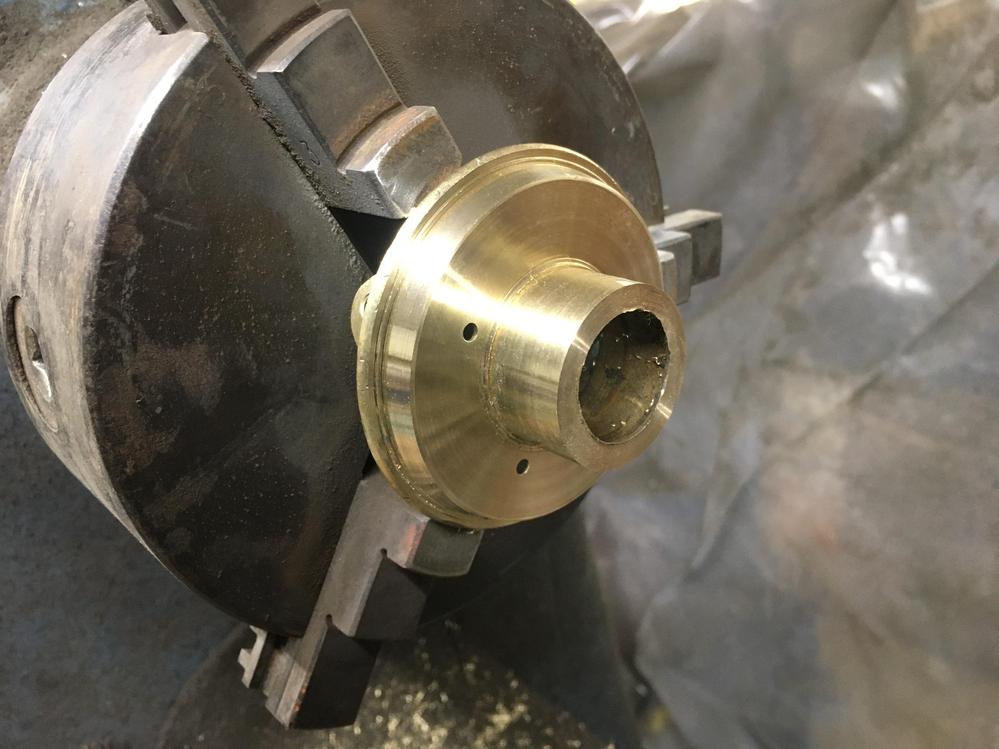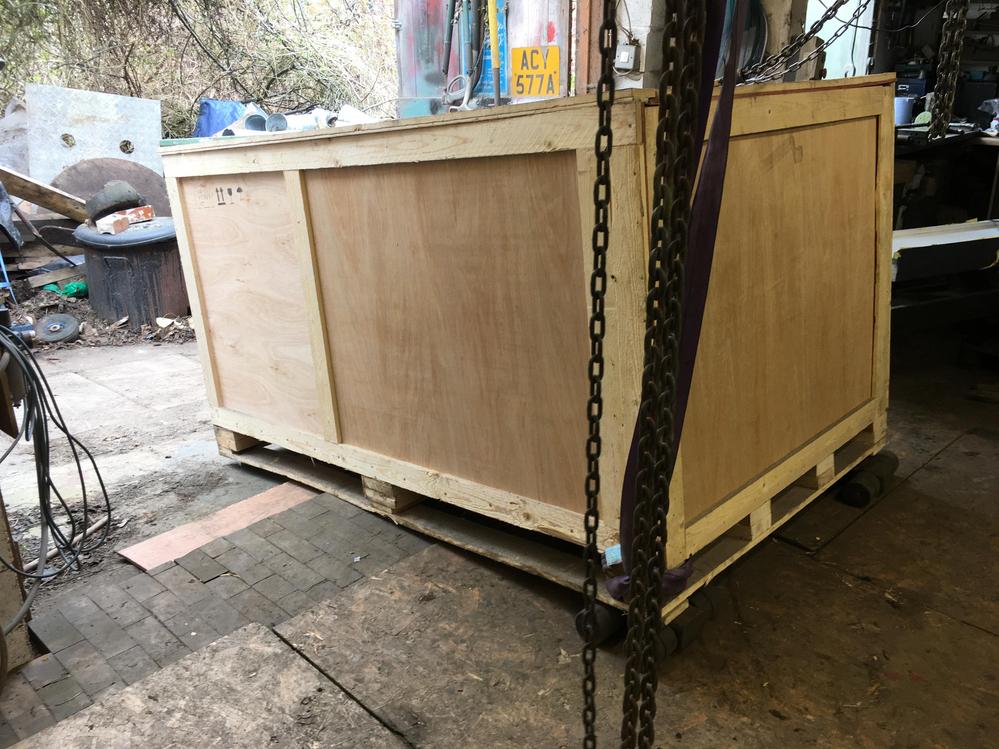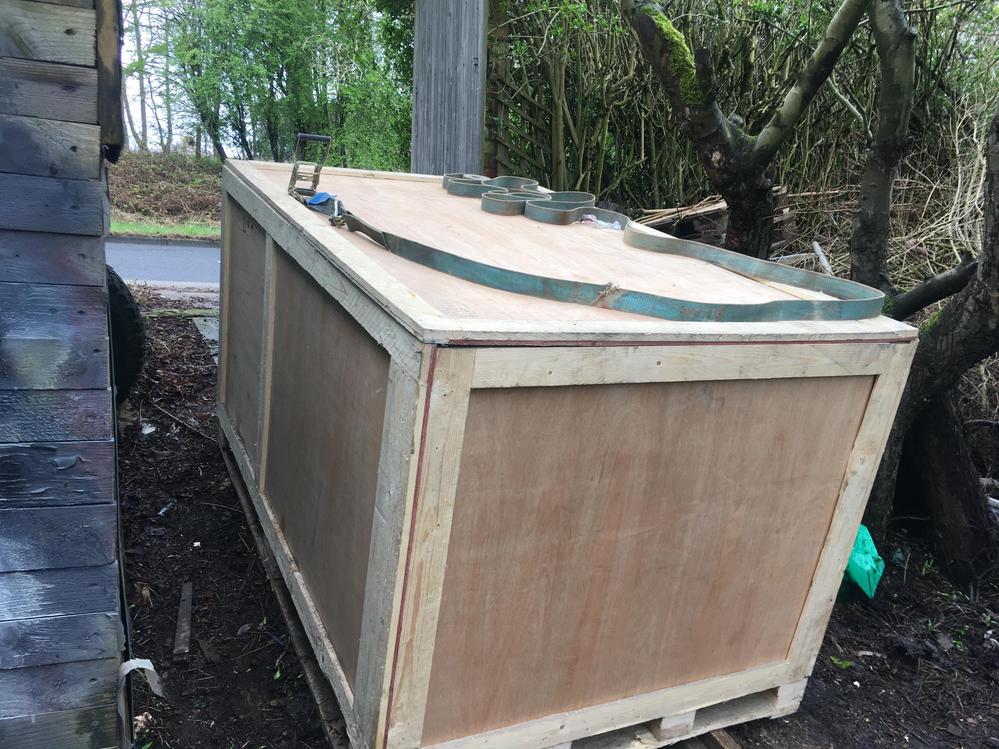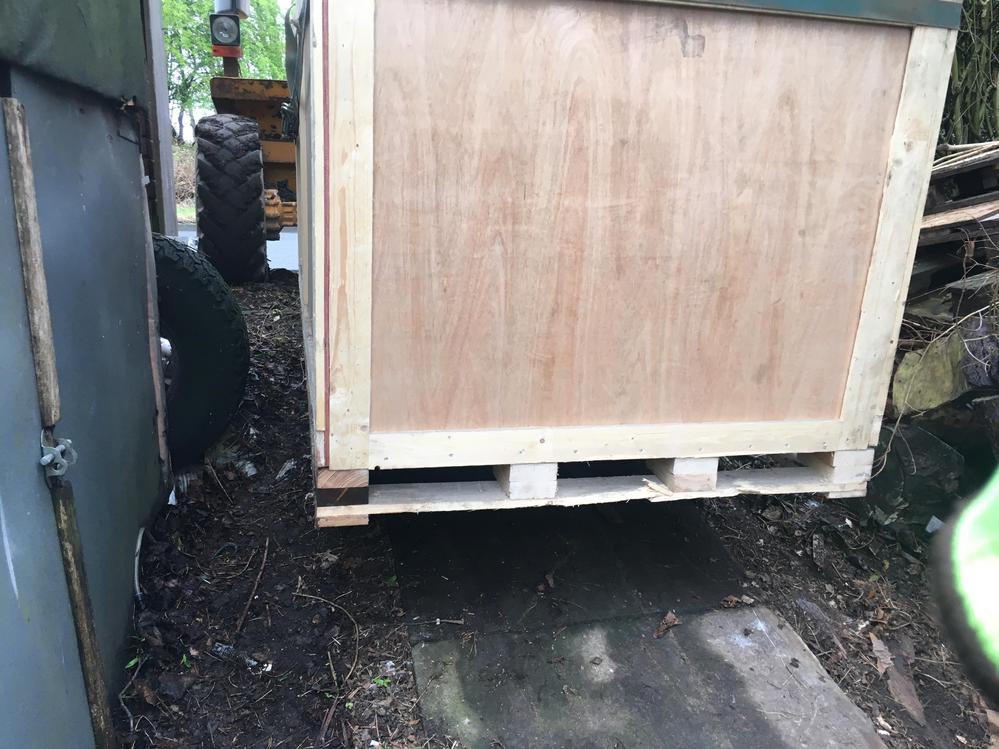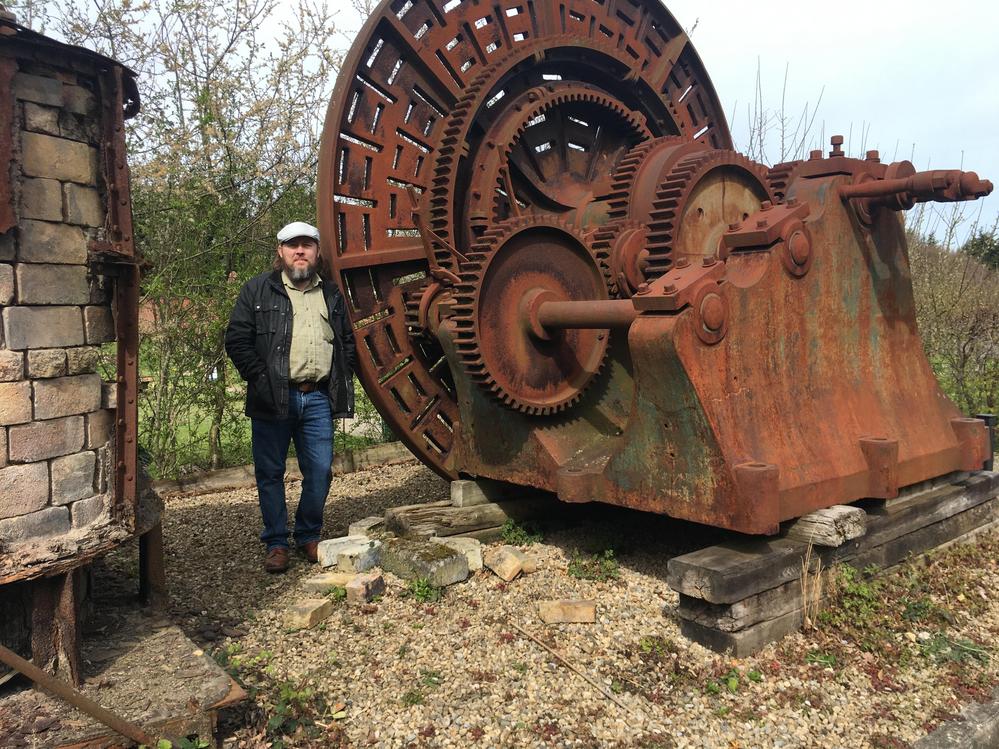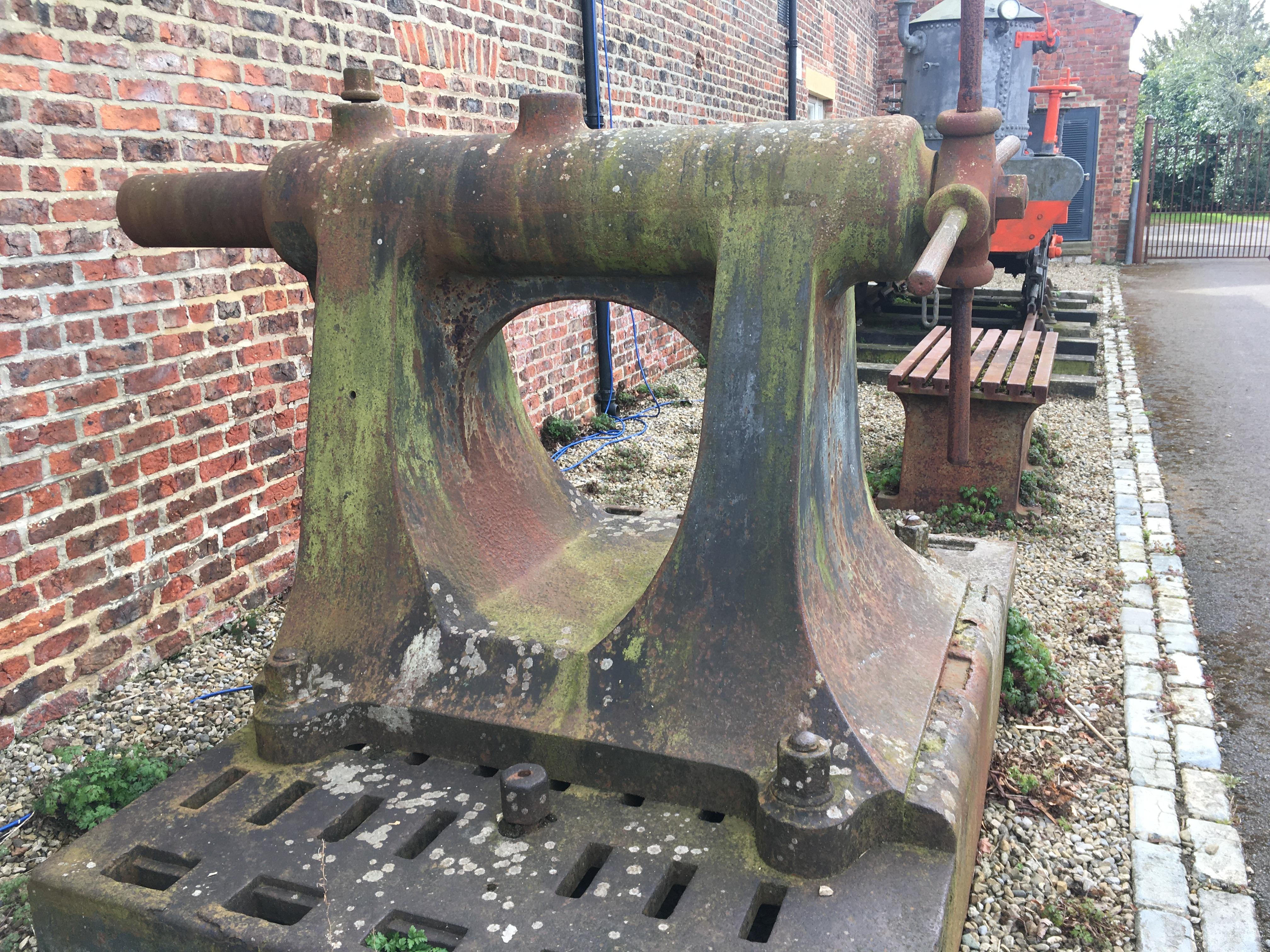A bit more done, it was fun trying to rotate the bed. I really didn't want it to slip and put a big shock load on the joist.
Lots of filler later
And a good coat of cellulose primer
You can see a casting fault has been filled, you can also see a bit of hand scraping on the ways
These are the racks for the carriage, smeared in waxoyle to protect
A bit belt sander action
Then scotchbrite
The electrics door was missing, but luckily the hinges were still their. I just so happened to have a spare in my stash.
I also had one of these beauties.
When you put the locking pin in the spindle to remove a faceplate it pushes against a plunger which stops the lathe being started. That wouldn't be good with a geared head, I've done it on the RS but that is flat belt so no damage. This part of the lockout bit, I quite like the rough casting finish but this has been dinged afew times.
It was a monumental day recently, this machine has been in the way for a long time. It was fun getting it out. It weighs about 1.4 tonne.
It took 3hrs to get it ready for collection.
On a different note, I took me lady for a day out, I think I've found my next lathe. I think its maybe a lathe for loco wheels, I'm not sure.
The tail stock is taller than me





